H/T Digitally Photgraph Cars
H/T Digitally Photgraph Cars
H/T Digitally Photgraph Cars
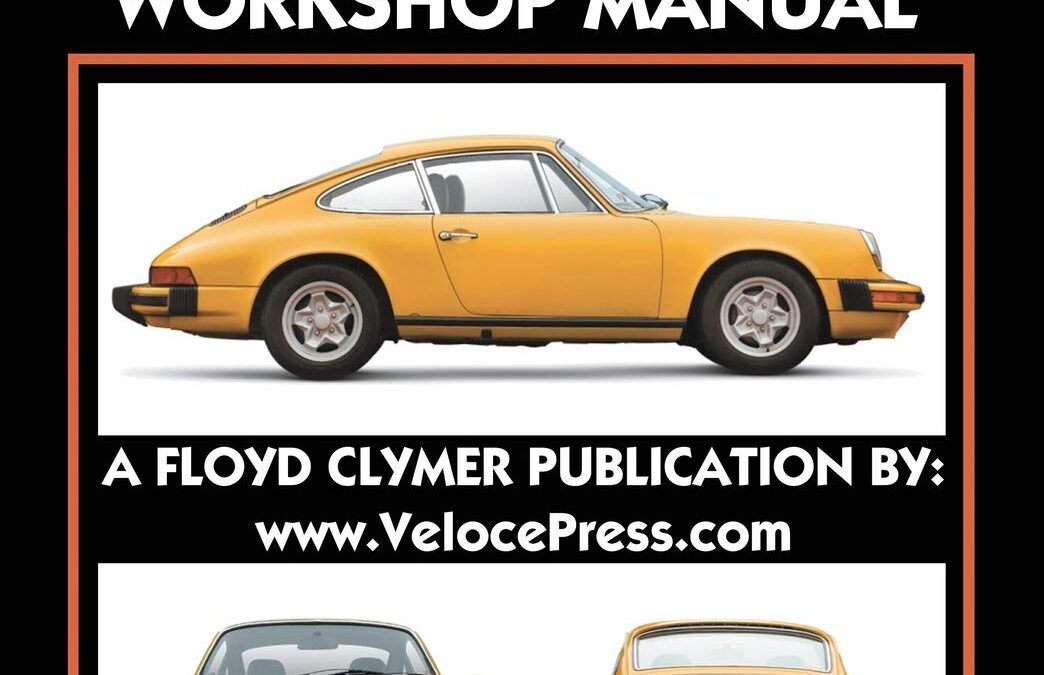
Updated from its previous format to include the later 3.2 Litre models through 1989. This Floyd Clymer publication includes complete technical data, service and maintenance information and comprehensive detailed instructions for the repair and overhaul of all major and minor mechanical and electrical components for the 1973 to 1989 Porsche 911G Series, 2.7, 3.0 and the 3.2 Litre models.
In its original format, this manual covered the Porsche 911 models through the 1978 model year. However, additional information for the earlier 2.7 and 3.0 Litre models that was not available at the time the original manual was published, is now included or appended to each chapter in this revised publication.
While this manual focuses on the 1973-1989 G series 911, much of the information is also applicable to the earlier 2.4 Litre (1971-73) models destined for the U.S.A., Australia, Japan and Canada that, due to emission requirements, were fitted with Bosch mechanical fuel injection (FIP). Consequently, this manual will also be of interest to owners of those 2.4 litre fuel injected models.
The manual is broken down into the following sections: Engine, Fuel System including Bosch mechanical fuel injection (FIP) continuous injection (CIS) and digital fuel injection (DME). Ignition Systems including Capacitive Discharge CDS, CDI and DME, Cooling, Heating & Exhaust Emission Systems, Clutch, Manual Transmission & Sportomatic Transmission, Rear Suspension & Drive Axles, Front Suspension, Steering, Brakes, Electrical System and Body. There is also an appendix to the rear of the manual that includes Technical Specifications and Wiring Diagrams.
While reprints of the factory manual are readily available, they are relatively expensive and we are pleased to be able to offer this reasonably priced alternative as a service to all 1973-1989 Porsche 911 enthusiasts worldwide.
248 pages, 311 illustrations plus an additional 66 pages of wiring diagrams, size 8.25 x 10.75 inches

Explore the unique stories behind every Grand Prix track in this fully updated second edition. Written by award-winning journalist Maurice Hamilton and complete with bespoke digital maps of each course, this is the ultimate guide to the circuits of Formula One.
Each venue is listed in chronological order from the first time it hosted a Grand Prix, starting with Monza, then taking in renowned locations such as Spa, Nürburgring, Monaco and Silverstone, all the way up to F1’s latest destination: Miami. Uncover little-known facts about famous circuits and discover the story behind some of the sport’s lesser-known venues.
This fully updated second edition includes:
* All 77 Formula 1 circuits, featuring six additional venues from the previous edition
* Bespoke digital maps of every racetrack
* Statistics including circuit lengths, lap records, and names of corners and straights
* Alphabetical and ‘by country’ indices for ease of reference
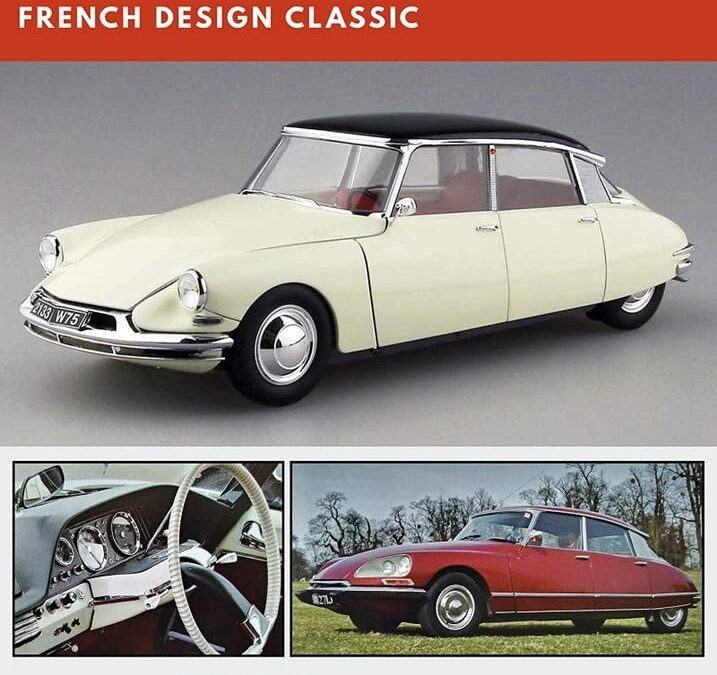
Launched in 1955 yet looking like a sci-fi design proposal for a future then undreamed of, Flaminio Bertoni’s ellipsoid sculpture with wheels that was the Citroën DS stunned the world.
There was a near riot at the 1955 Paris Motor Show launch of the car, orders flooded in for this, the new ‘big Citroën’ (a Voiture a Grande Diffusion or VGD) as the car that replaced the legendary Traction Avant range.
The term ‘DS’ stems from two Citroën parts of nomenclature – the type of engine used as the 11D, (D) and the special hemispherical design of the cylinder head as ‘Culasse Special’ (S): DS out of ‘Deesse’ or Goddess, was a more popular myth of ‘ DS’ origination, but an erroneous one.
But it was not just the car’s aerodynamically advanced body shape (Cd. 0.37) that framed the genius of the DS: hydro pneumatic self-levelling suspension, advanced plastics and synthetics for the construction of the roof and dashboard/fascia, and amazing road holding and cabin comfort were some of this car’s highlights.
Only the lack of an advanced new engine was deemed a missed opportunity. In fact Citroën had created a new engine for the car but lacked the resources to produce it in time for 1955.
DS was a major moment in the history of car design, one so advanced that it would take other auto manufacturers years to embrace. Yet DS in its ‘aero’ design was the precursor to today’s low drag cars of curved form.
Manufactured worldwide, used by presidents, leaders, diplomats, farmers and many types of people, the DS redefined Citroën, its engineering and design language, and its brand, for decades to come.
Prone to rust, not the safest car in the world, and always lacking a smoother powerplant, the DS still became an icon of car design.
Reshaped with a new nose and faired-in headlamps in 1967, DS remained in production until 1975.
Across its life DS spawned an estate car variant as the ‘Safari’, a range of limousines, two-door convertibles, and even coach-built coupes and rally specials.
This car was a product design that became an article of social science – it was that famous and it defined a European design movement upon a global stage then packed with ‘me too’ copyist designs.
The DS or ‘Goddess’ as it was tagged, was a tear-drop shaped act of French confidence in a world of the regurgitation of the known. Some argue that DS and its effect has never been surpassed.
This new value-for-money book provides innovative access to the design, history, and modeling of the revolutionary DS – one of the true ‘greats’ of motoring history and, a contemporary classic car of huge popularity.
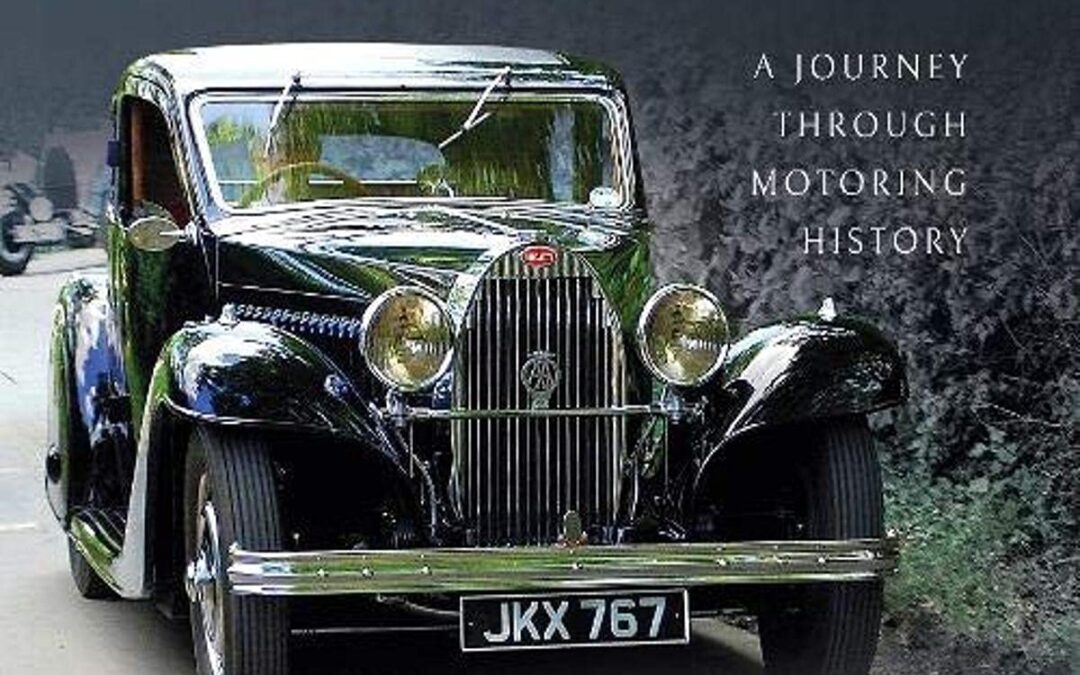

When Leo Mason traded a career in advertising for a shot at becoming a professional photographer in 1974, he set four goals for his new life, declaring that it should be both fun and financially viable; that it must involve traveling the world, meeting interesting people; and that his photography must be just a little better than average. Leo was aiming high, yet in his own words: ‘That’s pretty much how everything worked out.’
Leo’s love for photographing the sporting world’s greatest moments is plain to see – from a surreal experience with Sir Richard Noble’s Thrust 2 team out on the Bonneville Salt Flats and shooting US Open tennis from a never-before-seen overhead viewpoint, to capturing dramatic America’s Cup racing from a helicopter and spending a career-defining week with Muhammad Ali.
Not only filled with famous faces from the sporting world, this book is also a visual record of Leo’s creative and technical journey, his transition from film to digital, as well as his recollections of the times spent capturing these moments. He has led an extraordinarily interesting life, as many of the stories and anecdotes behind his images attest. Leo’s passion, craft and creative eye for the unusual are evident on every page, and his hugely significant contribution to the historical sporting record is his enduring legacy.

Live the time machine from 1967 to 2002. See how when things change they really stay the same! Take a ride with hosts Barbi Orr and Jane Norris as they run their motor mouth at events like Willow Springs, You will see many cars from the 60’s still racing today: Cobras, GT350, Vettes, and many others. Also celebrity interviews – see how today’s high-tech BLING BLING WHEELS are designed by Keith Kaucher (today’s top wheel designer). Go to a hidden speed shop in Culver City, Calif., where top master mechanic Steve Beck stores the rarest cars you’ll ever see!
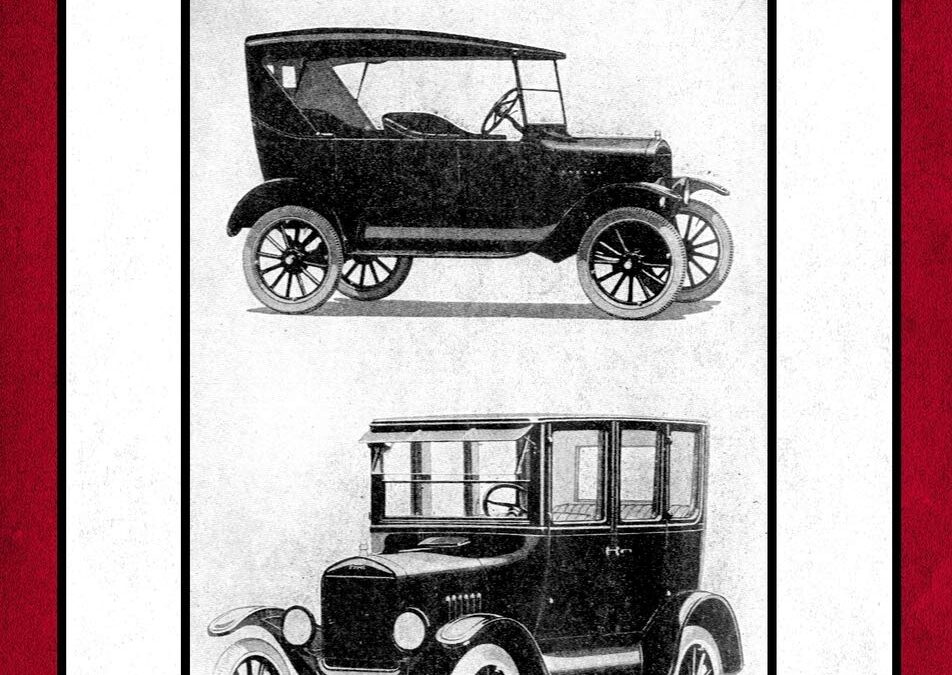
A timeless and thorough contemporary guide to Ford’s legendary Model T antique automobile.
Learn about the Model T inside and out. This detailed illustrated guide, first printed in 1925, includes everything that classic car enthusiasts need to know about one of the most famous and innovative automobiles of all time. This handy, expansive illustrated guide includes sections on construction, operation, and repair as well as information on Model T truck and tractor conversion sets, and the Fordson Farm Tractor.
Includes:
Operating principles
Instructions for driving
Maintenance guides
Car and tractor repairs
More than 160 photographs, technical guides, and illustrations
Upkeep and parts guide
At one time, the Ford Model T was the most popular car in the world. The Ford Motor company produced more than 16 million of them between 1908 and 1927. Writer and automobile enthusiast, Victor W. Page, wrote this detailed guide because he did not believe that Ford included enough technical information with their cars.
In the days before the Internet, owners, operators, and mechanics could learn everything that they needed to know about the Model T, conversion kits, and the Fordson Tractor from this incredible guide, which remains fun to read to this day.
This special edition reprinting includes enlarged pages, remastered images digitally re-scanned from a master source, the original classic type font, and a new retro-style cover design that stands out on the shelf.
Table of Contents:
Chapter 1: The Ford Car, Its Parts, and Their Functions
Chapter 2: The Engine and Auxilliary Groups
Chapter 3: Details of the Ford’s Chassis Parts
Chapter 4: Driving and Maintenance of Ford Cars
Chapter 5: Overhauling and Repairing Mechanism
Chapter 6: The Ford Tractor and Tractor Conversion Sets
Chapter 7: Operation Maintenance of Fordson Tractor
Chapter 8: Repairing and Using Fordson Tractor
Chapter 9: Useful Information for Repairmen and Owners
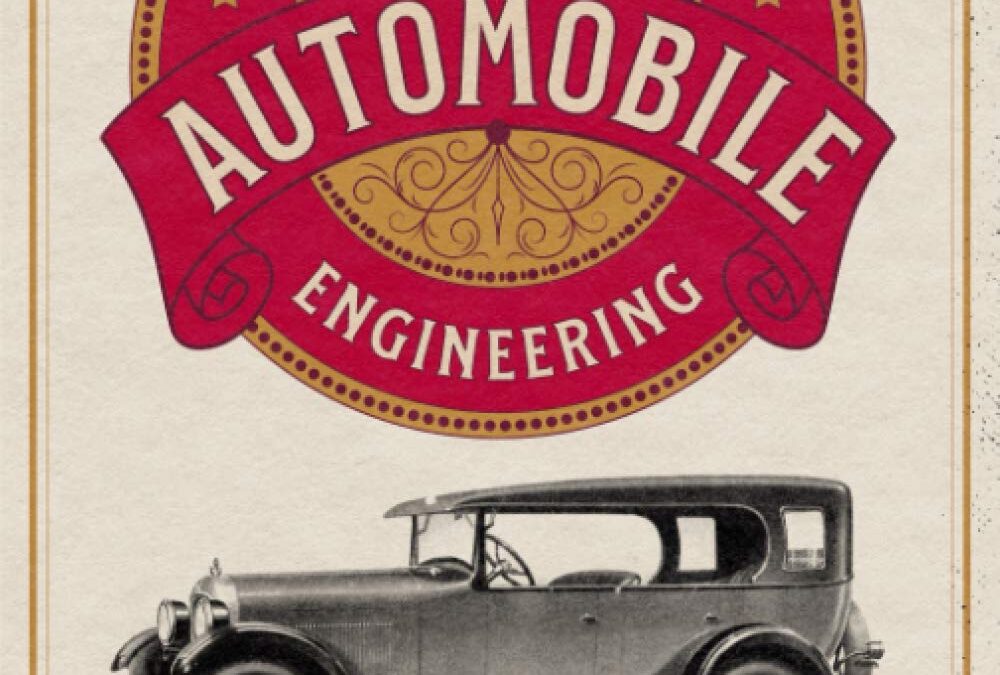
Volume 5 concludes the in-depth five-part series with detailed antique car wiring diagrams, data sheets, and a thorough look at classic electrical systems.
The Classic Cars and Automobile Engineering series spans five volumes with more than 1500 images and diagrams for enthusiasts, collectors, and mechanics. Volume 5 includes:
– Digitally restored images and diagrams
– Big 7” x 10” pages
– Easy to read writing style
– Author’s original page layouts
– Classic type font and hand-drawn lettering
– Bold retro-style cover
Everything that you ever wanted to know about the inner workings of antique cars, trucks, bikes, engines, tractors and more are included in this expansive tome of knowledge. Originally printed in 1926, this vast wealth of knowledge for classic car lovers was digitally restored and enhanced by writer-historian Mark Bussler and the CGR Publishing Restoration Workshop for a new generation of automobile enthusiasts.
This detailed, illustrated book collection is a must-have reference guide for all owners of period automobiles, motorcycles, airplanes, and anything powered by early 20th-century engines. Enlarged and printed on large 7” by 10” pages, The Classic Cars and Automobile Engineering series is designed for easy reading in the shop or library. Volume 5 focuses on electrical systems, wiring diagrams and data sheets.
Included subjects: How to read wiring diagrams – symbols – charts – generators – lamp voltages – dimming devices – electric horns – ignition timing – spark plugs – distributors – currents – methods of regulation – proper conduction – hydrometer tests – low battery – electric gear shifts – and more.
Includes wiring diagrams and datasheets for Apperson, Buick, Cadillac, Case, Chalmers, Chandler, Chevrolet, Chrysler, Cleveland, Cole, Cunningham, Davis, Dodge, Dort, Duesenberg, Durant, Essex, Ford, Flint, Franklin, Gardner, Gray, Haynes, Hudson, Hupmobile, Jackson, Jewett, Jordan, Kissel, LaFayette, Lexington, Lincoln, Marmon, Maxwell, Mercer, Moon, Nash, National, Oakland, Oldsmobile, Overland, Package, Paige, Peerless, Pierce-Arrow, Rco, Rickenbacker, Rollin, Rolls-Royce, R&V Knight, Star, Stephens, Studebaker, Stutz, Wills Sainte Claire, Willys-Knight, and Winton.
Table of contents:
– Chapter 1: Reading Wiring Diagrams and Auxiliary Electrical Equipment
– Chapter 2: Wiring Diagrams and Data Sheets
– Chapter 3: Summary of Electrical Principles
– Chapter 4: Ignition Instructions
– Chapter 5: Generators
– Chapter 6: Wiring Systems
– Chapter 7: Battery
– Chapter 8: Glossary of Automobile Terms
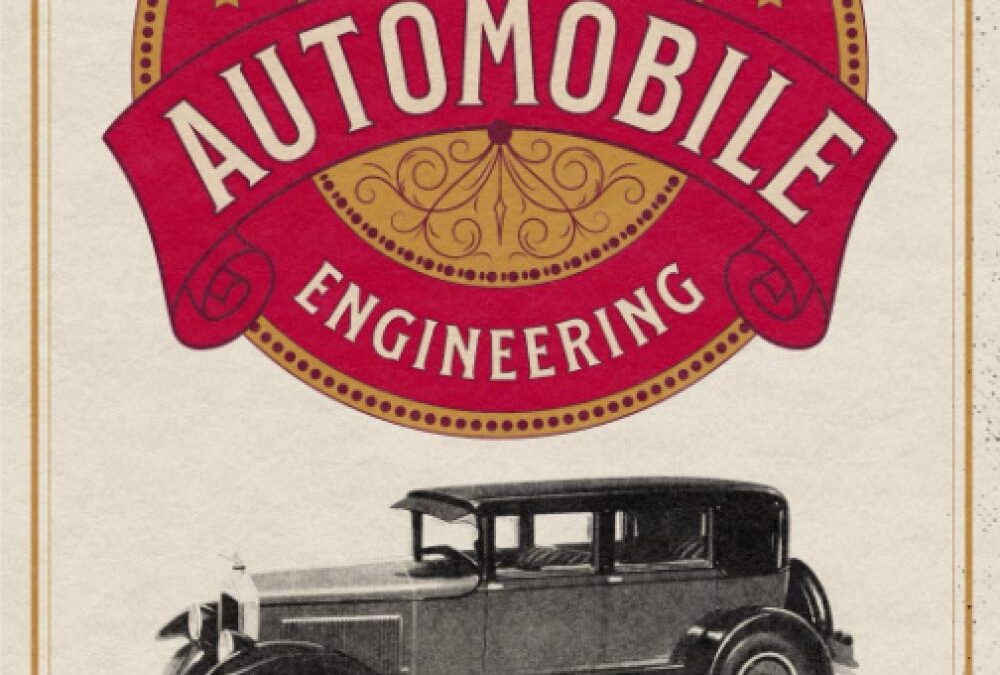
Volume 4 in this illustrated five-part series highlights ignitions, starters, generators, batteries, and electrical repairs.
The Classic Cars and Automobile Engineering series spans five volumes with more than 1500 images and diagrams for enthusiasts, collectors, and mechanics. Volume 4 includes:
– Digitally restored images and diagrams
– Big 7” x 10” pages
– Easy to read writing style
– Author’s original page layouts
– Classic type font and hand-drawn lettering
– Bold retro-style cover
Everything that you ever wanted to know about the inner workings of antique cars, trucks, bikes, engines, tractors, and more are included in this expansive tome of knowledge. Originally printed in 1926, this vast wealth of knowledge for classic car lovers was digitally restored and enhanced by writer-historian Mark Bussler and the CGR Publishing Restoration Workshop for a new generation of automobile enthusiasts.
This detailed, illustrated book collection is a must-have reference guide for all owners of period automobiles, motorcycles, airplanes, and anything powered by early 20th-century engines. Enlarged and printed on large 7” by 10” pages, The Classic Cars and Automobile Engineering series is designed for easy reading in the shop or library. Volume 4 focuses on electrical equipment and features elementary classic car electric system workings, ignition fundamentals, batteries, electrical repair, starting motors, and more.
Specific detailed subjects include magnetism, poles, laws, magnetic substances, dynamos, armature windings, field magnets, induction, self-induction, source of current, magnetos, spark plugs, induction coils, spark timing, magneto speeds, types of wiring systems, battery charging, cleaning a battery, replacing a jar, Edison Cell care, testing equipment, lamp troubles, and much more.
Table of contents:
– Chapter 1: Electrical Principles
– Chapter 2: Ignition Fundamentals
– Chapter 3: Ignition Systems
– Chapter 4: Ignition Operations
– Chapter 5: Motors
– Chapter 6: Generators
– Chapter 7: Storage Batteries
– Chapter 8: Electrical Repairs
– Chapter 9: Ford Car Electrical System
– Chapter 10: Ohm’s Law
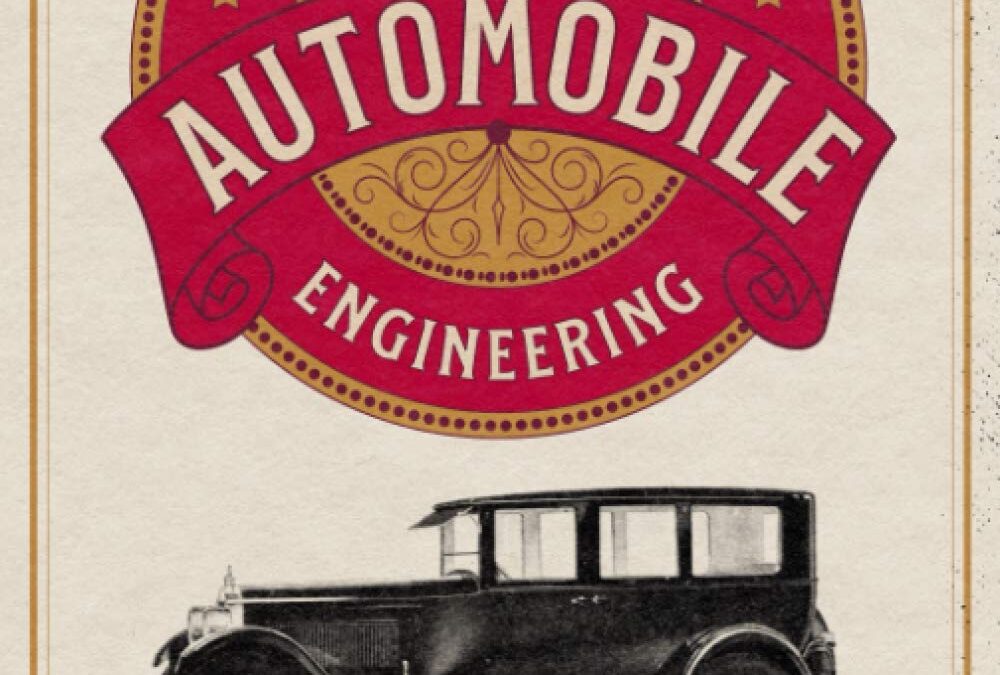
Volume 3 in this illustrated five-part series highlights antique motorcycles, tractors, airplane engines, period welding techniques, and Q&A.
The Classic Cars and Automobile Engineering series spans five volumes with more than 1500 images and diagrams for enthusiasts, collectors, and mechanics. Volume 3 includes:
– Digitally restored images and diagrams
– Big 7” x 10” pages
– Easy to read writing style
– Author’s original page layouts
– Classic type font and hand-drawn lettering
– Bold retro-style cover
Everything that you ever wanted to know about the inner workings of antique cars, motorcycles, engines, tractors and more are included in this expansive tome of knowledge. Originally printed in 1926, this vast wealth of knowledge for classic car and bike lovers was digitally restored and enhanced by writer-historian Mark Bussler and the CGR Publishing Restoration Workshop for a new generation of automobile and classic motorcycle enthusiasts.
This detailed, illustrated book collection is a must-have reference guide for all owners of period automobiles, motorcycles, airplanes, and anything powered by early 20th-century engines. Enlarged and printed on large 7” by 10” pages, The Classic Cars and Automobile Engineering series is designed for easy reading in the shop or library. Subjects covered in Volume 3 include antique motorcycles with illustrations of classic Harley-Davidson models such as the Twin-Cylinder Three-Speed Motorcycle, Thor lightweight bikes, The Merkel Motorcycle, Dayton Motor Bicycle, a detailed Excelsior Motorcycle diagram, and more.
Aviation engines are covered in detail from manufacturers such as King-Bugatti, Curtiss, Liberty, Packard, and Sunbeam. Tractors, air-cleaners, oils, ignitions, workbenches, blowtorches, micrometers, tool grinding, drill presses, gases, arc welding, types of welds, after-treatment, and much more are covered with numerous detailed illustrations.
Table of contents:
– Chapter 1: Motorcycles
– Chapter 2: Aviation Engines
– Chapter 3: Gasoline Tractors
– Chapter 4: Shop Information
– Chapter 5: Oxy-Acetylene Welding Practice
– Chapter 6: Questions and Answers
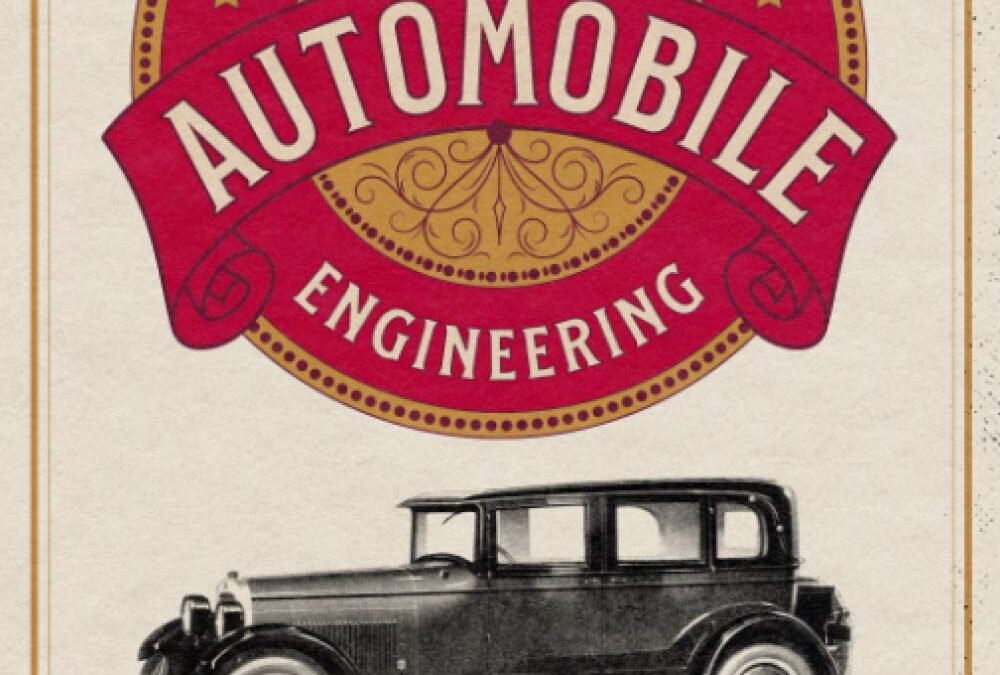
Part 2 of the definitive five-part book series about classic automobile engineering covers transmissions, brakes, wheels, tires, and more.
The Classic Cars and Automobile Engineering series spans five volumes with more than 1500 images and diagrams for enthusiasts, collectors, and mechanics. Includes:
– Digitally restored images and diagrams
– Big 7” x 10” pages
– Easy to read writing style
– Author’s original page layouts
– Classic type font and hand-drawn lettering
– Bold retro-style cover
Everything that you ever wanted to know about the inner workings of antique cars, trucks, bikes, engines, tractors, and more is included in this expansive tome of knowledge. Originally printed in 1926, this vast wealth of knowledge for classic car lovers was digitally restored and enhanced by writer-historian Mark Bussler and the CGR Publishing Restoration Workshop for a new generation of automobile enthusiasts.
This detailed, illustrated book collection is a must-have reference guide for all owners of period automobiles, motorcycles, and anything powered by early 20th-century engines. Enlarged and printed on large 7” by 10” pages, The Classic Cars and Automobile Engineering series is designed for easy reading in the shop or library. Subjects covered in Volume 2 include transmissions, axles, brakes, wheels, tires, and classic Fords.
Table of contents:
– Chapter 1: Transmissions
– Chapter 2: Rear Axles and Final Drive
– Chapter 3: Brakes
– Chapter 4: Steering Apparatus
– Chapter 5: Frames and Special Type of Drive
– Chapter 6: Springs and Shock Absorbers
– Chapter 7: Front Axles and Bearings
– Chapter 8: Wheels
– Chapter 9: Rims
– Chapter 10: Tires
– Chapter 11: Ford Construction and Repair
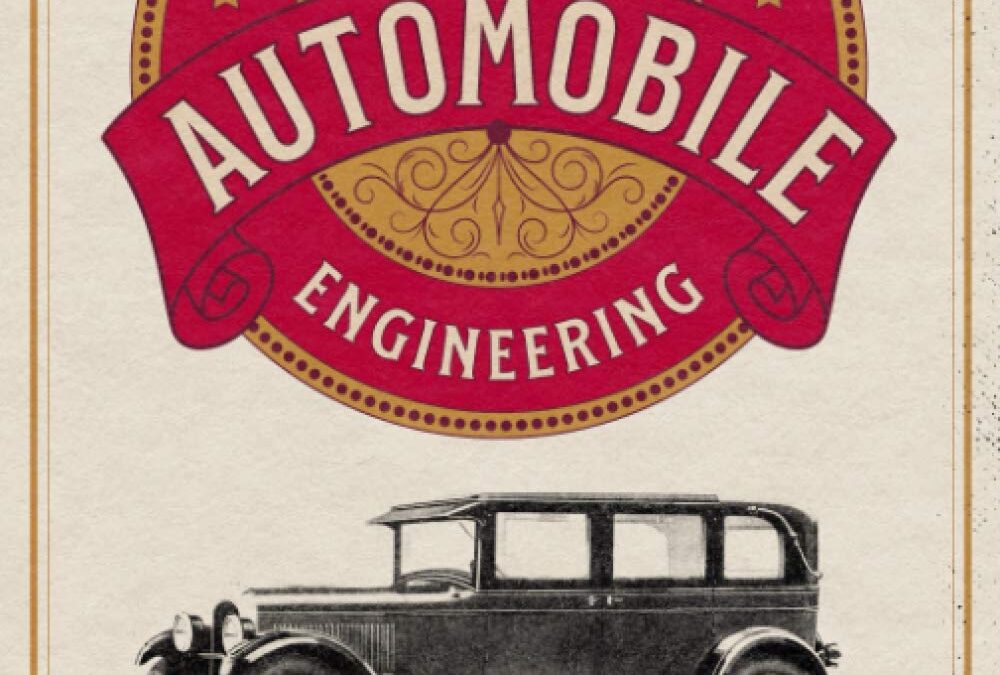
The definitive five-part book series about classic automobile engineering starts here with Volume 1.
The Classic Cars and Automobile Engineering series spans five volumes with more than 1500 images and diagrams for enthusiasts, collectors, and mechanics. Includes:
– Digitally restored images and diagrams
– Big 7” x 10” pages
– Easy to read writing style
– Author’s original page layouts
– Classic type font and hand-drawn lettering
– Bold retro-style cover
Everything that you ever wanted to know about the inner workings of antique cars, trucks, bikes, engines, tractors, and more is included in this expansive tome of knowledge. Originally printed in 1926 by the American Technical Society, this vast wealth of knowledge for classic car lovers was digitally restored and enhanced by writer-historian Mark Bussler and the CGR Publishing Restoration Workshop for a new generation of automobile enthusiasts.
This detailed, illustrated book collection is a must-have reference guide for all owners of period automobiles, motorcycles, and anything powered by early 20th-century engines. Enlarged and printed on large 7” by 10” pages, The Classic Cars and Automobile Engineering series is designed for easy reading in the shop or library. Subjects covered in Volume 1 include elementary engine principles – spark plug position – throttle valves – the inner workings of cylinders – crankshaft balance – water cooling systems – cone, disc, hydraulic, borg and beck clutches – four-cylinder, six-cylinder, eight-cylinder, and twelve-cylinder engines – much more.
Table of contents:
– Chapter 1: Outline of Automobile Construction
– Chapter 2: Explosion Engines
– Chapter 3: Cylinders
– Chapter 4: Pistons
– Chapter 5: Valves and Their Mechanism
– Chapter 6: Camshafts
– Chapter 7: Connecting Rods
– Chapter 8: Crankshafts
– Chapter 9: Crankcases
– Chapter 10: Carburetors
– Chapter 11: Cooling Systems
– Chapter 12: Manifold Design and Construction
– Chapter 13: Clutches
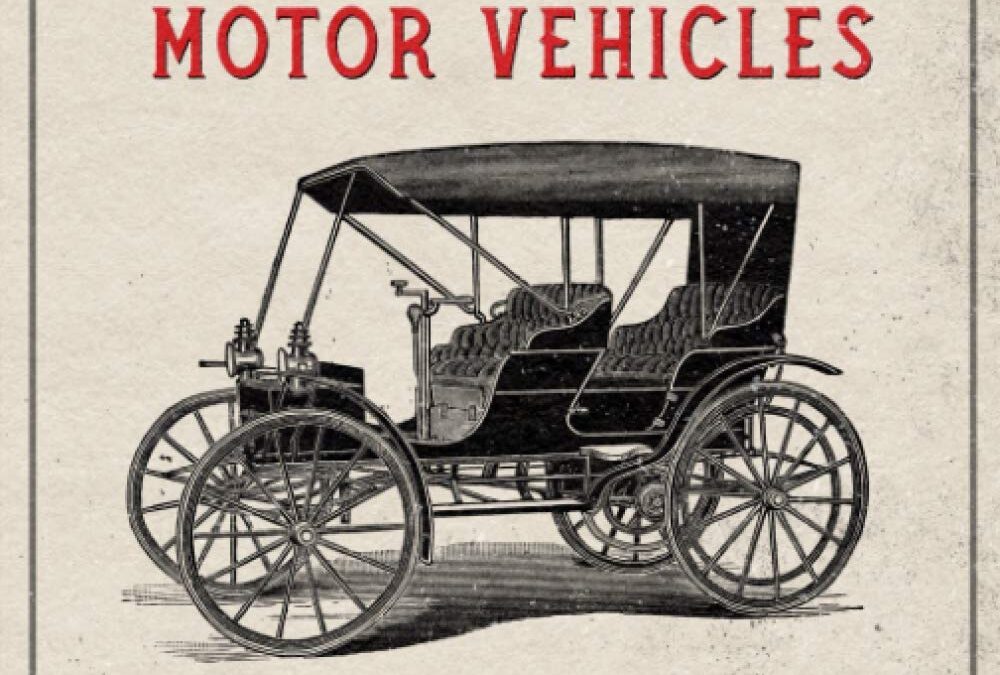
More than 500 detailed illustrations enhance this contemporary guide to the inner workings and mechanics of turn-of-the-century automobiles, trucks, and motorcycles.
Released in 1911 as “Self-Propelled Vehicles: A Practical Treatise,” James Homans’ spectacular, all-encompassing book about the fascinating world of gas-powered, electric-powered, and steam-powered motor vehicles leaves no stone unturned in its celebration of the classic automobile.
Classic car collectors, racers, and enthusiasts will enjoy this thorough look under the hood as Homans dissects every part of the “horseless carriage” from a unique and contemporary viewpoint that offers a keen insight into the bygone age of dramatic motoring. Antique Cars and Motor Vehicles spans more than 640 pages, immersing readers in a world of automotive history, vehicle parts, driving gears, steering, suspension, engines, exhaust, and even old fashioned American road signs.
The hundreds of Images of cars, engines, parts, and mechanic operations are crisp and detailed, created by skilled master artists with a sharp eye for detail. It’s everything that you ever wanted to know about classic motoring in a single, entertaining, and well-illustrated volume!
This enhanced 2020 re-release features enlarged 7” x 10” pages that retain the original classic type font and page layouts, crisp, digitally re-scanned images, and a new retro cover design created to enhance your reading room and garage.
Table of Contents:
Chapter 1 – History of Self-Powered Vehicles
Chapter 2 – The Make-Up of a Motor Carriage
Chapter 3 – Compensation and Compensating Devices
Chapter 4 – The Driving Car
Chapter 5 – The Steering of a Motor Vehicle
Chapter 6 – Combined Steering and Driving
Chapter 7 – The Supports of a Motor Vehicle
Chapter 8 – Motor Carriage Wheels
Chapter 9 – Tires
Chapter 10 – The Construction of Tires
Chapter 11 – Pneumatic Tire Troubles
Chapter 12 – Care of Pneumatic Tires
Chapter 13 – Types and Merits of Automobiles
Chapter 14 – The Theory of Heat Engines
Chapter 15 – The Parts of a Gas Engine
Chapter 16 – The Four-Cycle Gas Engine
Chapter 17 – The Two-Cycle Gas Engine
Chapter 18 – Compression and Expansion
Chapter 19 – Efficiency in a Gas Engine
Chapter 20 – Exhaust
Chapter 21 – Water Cooling for the Cylinder
Chapter 22 – Air Cooling for the Cylinder
Chapter 23 – Power Elements of a Gas Engine
Chapter 24 – Carburetors
Chapter 25 – Ignition
Chapter 26 – Balancing Gasoline Engines
Chapter 27 – Governing and Control of a Gasoline Engine
Chapter 28 – Clutches
Chapter 29 – Transmissions
Chapter 30 – Brakes
Chapter 31 – Roller Bearings
Chapter 32 – Lubricants
Chapter 33 – Practical Operation of Gasoline Engines
Chapter 34 – Motorcycles
Chapter 35 – Steam Engines for Automobiles
Chapter 36 – Boilers and Flash Generators
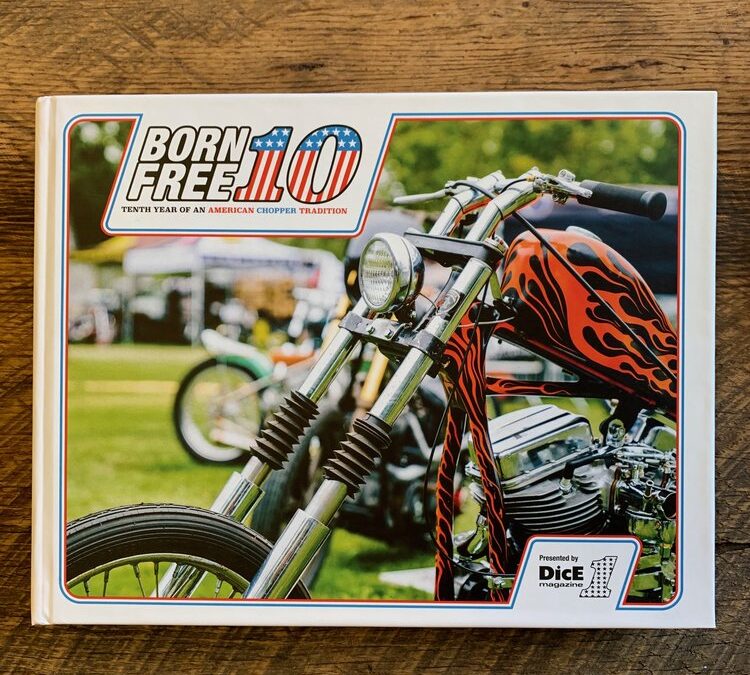
We are really excited to announce our Born Free 10 hard bound book!!
270 glorious pages, featuring the digital photography of Ben Zales and film photography of Shane Markland. The beautiful design and layout was handled by our very own, Jimmy Dean Horn Jr. The mix of Ben’s digital shots and Shane’s polaroids and 35mm film shots, give this book an excellent balance and make it a perfect experience of the show.
This is a limited run of only 500 books!

Volume 2 of the Encyclopedia 727 about one of the most famous and important airplanes in history, and Boeing’s first bestseller, best-selling commercial jet for more than two decades. The Boeing 727 is an aviation icon! Its grandiose story is told in detail in Encyclopedia 727. For the first time in history, an entire encyclopedia dedicated to a single plane!
The 6 volumes will tell the complete story in 2,640 pages, with more than 3,200 photoreal profiles and exclusive to the 727 Encyclopedia, showing the plane in every painting in the airlines that have operated it in the more than 59 years of use of the model until today. All books have digital content with access via QR code and the sections will receive updates on the data of the aircraft in operation, which can be downloaded in PDF and printed, keeping your 727 Encyclopedia up to date.
In volume 2 you will learn about the different models of the 727, with details of each variant of the factory Boeing 727 and the modifications received to extend its operational life, testimonials from pilots and other professionals about the trijet, the most unusual stories that happened with the model , an account of all the accidents involving the device and more: the 727 in the media, flight simulators, statistics, preserved planes, in addition to the production list and a complete chronology of the model’s history. Finally, a section dedicated to plastic models and collectors, with the 727 at scale.
Volume 2 has 376 pages.
Sections of Volume 2: 1. MODELS & DESIGNS, 2. THE 727 AND ITS FRIENDS, 3. FANTASTIC STORIES, 4. ACCIDENTS, 5. THE 727 IN THE MEDIA, 6. THE 727 AT SCALE, 7. THE 727 IN THE SIMULATORS, 8 The 727 IN STATISTICS, 9. THE 727 PRESERVED, 10. PRODUCTION LIST, 11. CHRONOLOGY.
Details: more than 100 photos (some exclusively colorized for the book), more than 259 photoreal profiles of 727’s, 370 artwork, maps, infographics, 71 tables and 149 QR codes with external content, including videos, documents and miscellaneous content about the trijet.
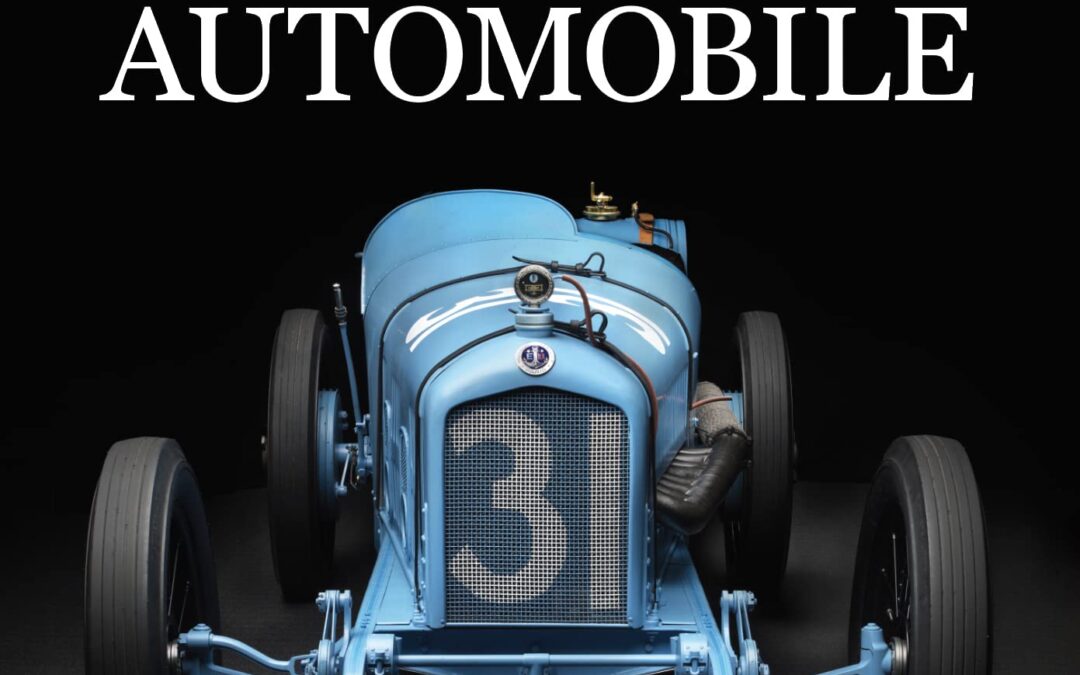
In the last one hundred years, cars have shaped our lives. Other everyday cultural artifacts, such as watches, telephones, musical instruments, and televisions, have certainly had influence, but the car is by far the most significant. Now, change is coming for the car, as it is for so many other industrial artifacts. Once, cars were distinct machines. Now, they are evolving into multifunctional digital devices. New fuels, new modes of travel, and new technologies are disrupting the traditional role of the much-loved family car.
What is to become of this material legacy? Should we really let go of it? Without memory, personal and shared, we lose our way, our individuality, and our culture. This proposition is at the heart of The Archaeological Automobile.
Miles C. Collier’s landmark approach uses an “archaeological mindset” to interpret the automobile as a cultural artifact in six themes:
The Development of the Automobile describes how the car emerged from a pressing human need for mobility, tracing our relationship with horses, our invention of the bicycle, and how we turned our backs on both as daily transport for the allure of the car.
The Rise of the Collectible Automobile asks how and why ratty relics decaying in recycling yards can become valuable and treasured collectibles. It reveals the effect of cultural influences on our perception of cars and on the dynamics of the collector car market.
The Archaeological Mindset picks up a wrench, gets into the workshop, and tracks the restoration of a 1919 Ballot Indy car using hands-on experience and background research while deploying the “archaeological imagination.” The archaeological clues are in the detail.
Collecting and the Archaeological Automobile deals with the characteristics of collecting. Why do we accumulate “stuff”? Is it greed? Is it passion? Is it a desire for legacy? And what makes a “good” collection? Is it bling? Is it style? Is it material worth? The answer lies in connoisseurship.
Restoring the Archaeological Automobile debates the merits of diverse restoration strategies and the reasoning behind them, including the tricky question of how to repaint the tilt-front nose of a 1964 Alfa Romeo GTZ racing car and still preserve the evidence of forty years of accumulated sandblasting and chipping.
The Archaeological Automobile of the Future is a call to action. Cars as we know them are customarily trashed, government regulations encourage indifference, and the skills and knowledge associated with fixing them are slowly vanishing as we lose older generations of experienced craftsmen. How can we preserve humanity’s treasure trove of automotive knowledge for generations to come?
Filled with engaging stories and practical examples, this is a handbook of the most thoughtful practices, not just for automobile owners and the historical car industry, but for collectors, professionals, and users of all kinds of industrial era artifacts.
The Archaeological Automobile combines scholarship, pertinent anecdotes, style, and experience to provide a stimulating account of why we should all be archaeologists now.
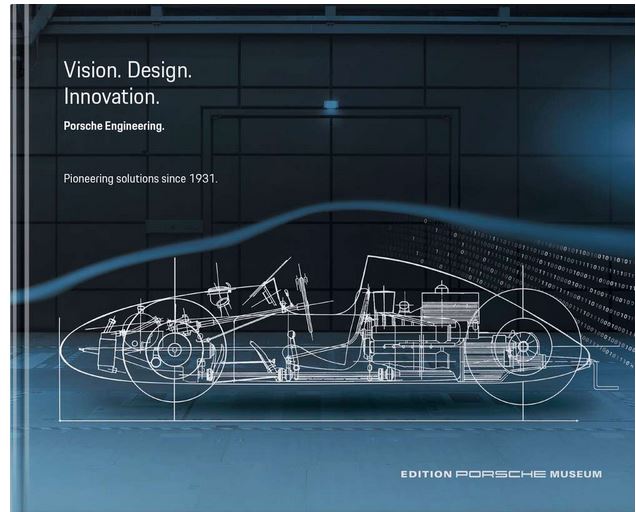
In 1931 Ferdinand Porsche started his own business in a rented office in Stuttgart’s Kronenstrasse thus laying the foundation for today’s Porsche brand. Since then, the name Porsche has been closely associated with development projects for customers worldwide. Porsche Engineering continues this tradition with innovative solutions and a high level of digitalization expertise in an international network of locations.
Technical details:
Edition Porsche Museum
Format: 29.5 x 24 cm, Hardcover
Pages: 240
Illustrations: 140
Language: English
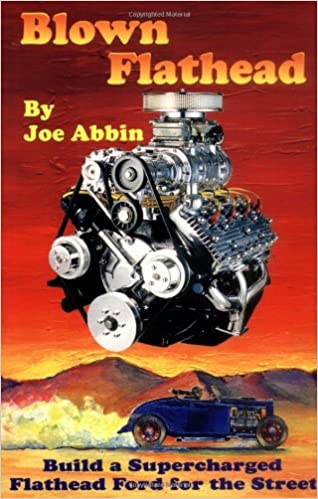
SOLD OUT
See digital version HERE
Run with the big dogs! Over six years of research, flow testing, racing, and street driving have resulted in this “how-to recipe” for building a high performance Ford or Mercury flathead for the street. Packed with flathead building and tuning tips, actual flow test data, and proven techniques for obtaining outstanding performance at a reasonable cost, for both superchared and normally aspirated engines.
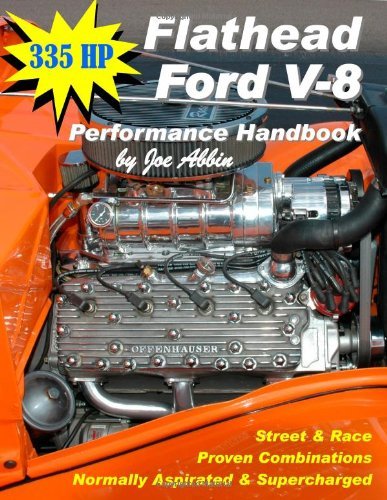
SOLD OUT
See digital version HERE
This handbook is packed with flathead Ford building and tuning tips, describing proven combinations for both the street and the track. Complete buildups of both normally aspirated and supercharged flatheads are presented with actual test results. The featured engine, “Killer,” made over 215 hp naturally aspirated, and 335 hp supercharged! Find out what really works for making serious flathead horsepower without breaking the engine or the budget!